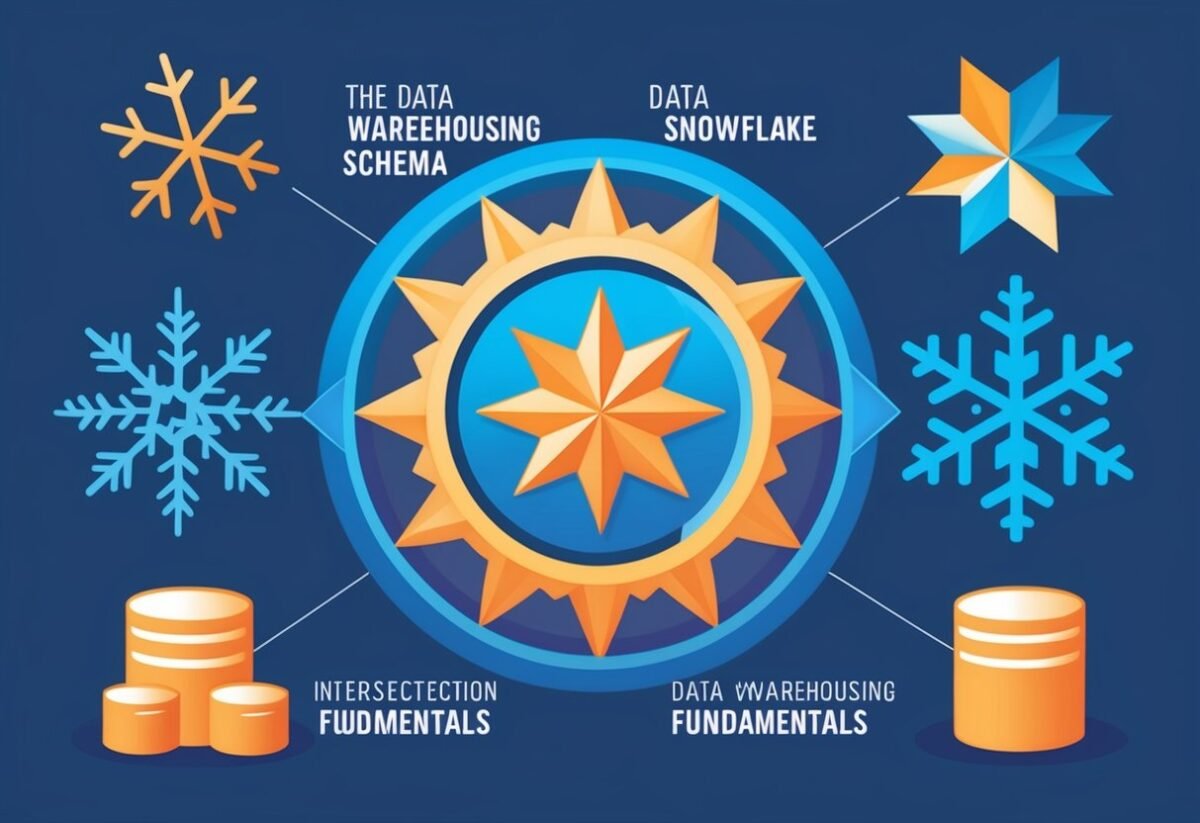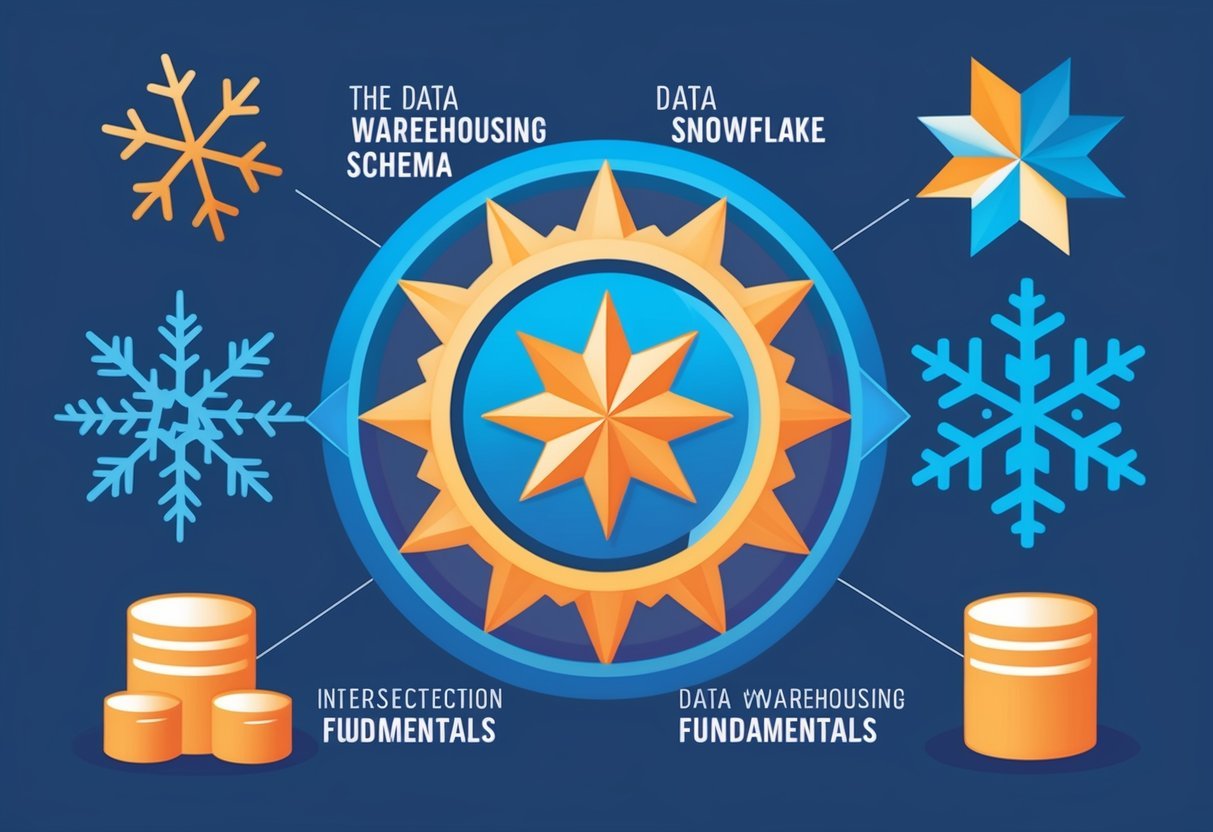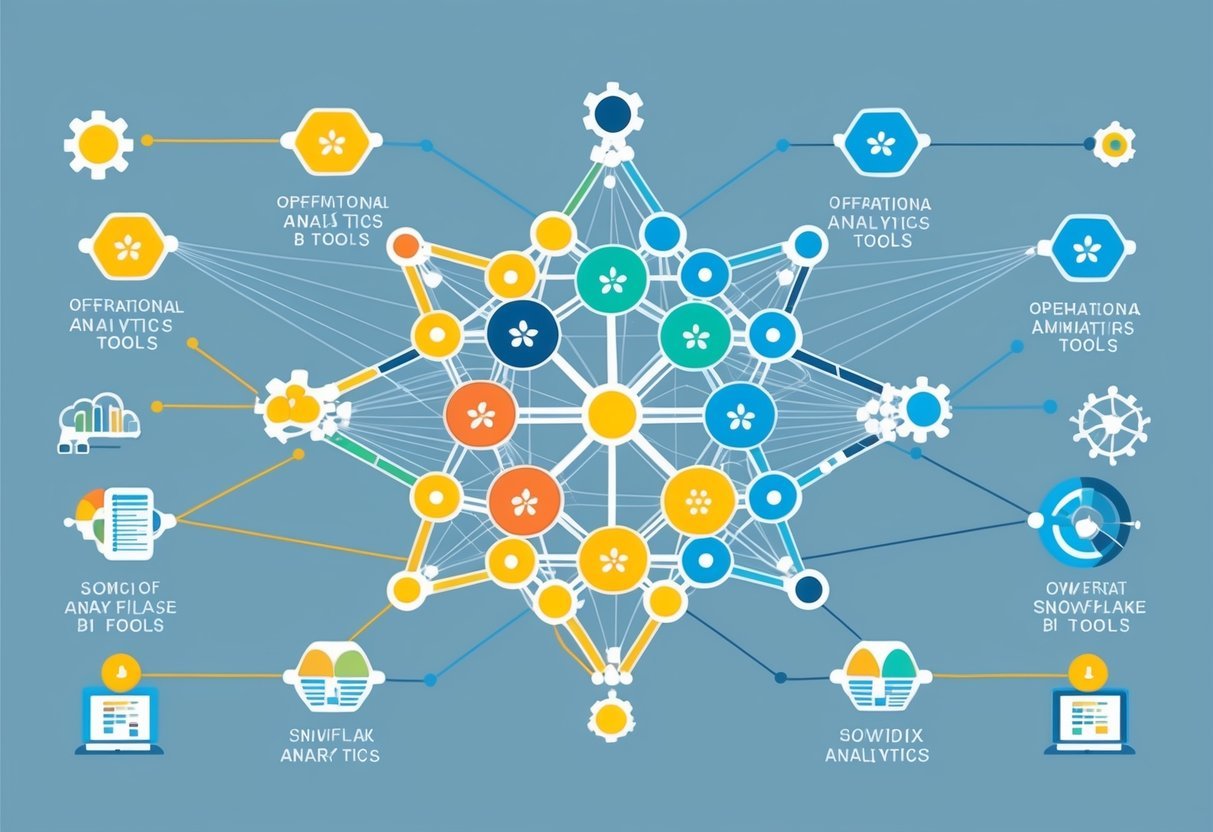Understanding Decision Trees
Decision trees are a vital part of machine learning, useful for both classification and regression tasks. They are straightforward, allowing easy interpretation and decision-making.
Foundations of Decision Trees
Decision trees are a type of non-parametric supervised learning method. They work by splitting the dataset based on specific attributes. The most significant attributes are determined using different algorithms like CART, ID3, and C4.5.
Each split aims to increase information gain, guiding decisions based on data characteristics. Decision trees excel in handling both numerical and categorical data. Their structure is similar to a flowchart, with each internal node representing a test on an attribute.
Components of a Decision Tree
A decision tree starts with a root node that represents the entire dataset. It then branches out into internal nodes or decision nodes that split the data based on chosen attributes. Leaf nodes, also known as terminal nodes, are where decisions or predictions occur.
Each path from the root to a leaf represents a decision rule. The tree’s depth is determined by the number of divisions from root to leaf. This structure helps in capturing patterns in the data and making predictions based on the target variable.
Types of Decision Trees
There are primarily two types of decision trees: classification trees and regression trees. Classification trees are used when the target variable is categorical. They determine the class or group of the given inputs.
On the other hand, regression trees deal with continuous target variables, using averages or sums to predict outcomes. These distinctions allow decision trees to cater to diverse requirements in machine learning practices, providing flexibility and reliability. Each type has its strengths, making them applicable to various data-driven problems.
Data Preparation for Decision Trees
In preparing data for decision trees, it’s crucial to handle missing values and encode categorical data properly. Selecting the right features is also important, as irrelevant ones can affect the model’s performance. By considering these factors, a cleaner and more effective dataset can be developed for decision trees.
Handling Missing Values
Handling missing values is important to ensure the model’s reliability. Missing data can lead to inaccurate predictions and biased results, so addressing it is a key part of data pre-processing.
One method is to remove any rows or columns with missing data, especially if they form a large portion of the dataset and impair validity.
Another technique is imputation, which involves filling missing values with estimated ones. For numerical data, this could mean replacing missing values with the mean, median, or mode. For categorical data, the most frequent category could be used. Advanced methods like using algorithms to predict missing values can also be applied.
Properly handling missing values improves the decision tree’s ability to make accurate predictions based on available data features.
Encoding Categorical Data
Decision trees need numerical input, so encoding categorical data is necessary. Categorical variables represent types like color or brand, which must be converted into numbers.
Label encoding is one method, assigning each category a unique number, but it can mislead algorithms if categories have no ordinal relation.
For categories without order, one-hot encoding is more suitable. This technique creates binary columns for each category value, treating each as a separate feature. This prevents misleading hierarchical interpretations and allows the decision tree to properly evaluate each category’s role in predicting outcomes.
Encoding methods significantly affect model precision, hence choosing the right approach is crucial for accurate analysis.
Feature Selection Techniques
Feature selection is essential to focus the model on relevant dataset attributes. Too many features can lead to overfitting, where the model performs well on training data but poorly on unseen data.
Techniques like filter methods rank features based on statistical tests, helping narrow down the most influential ones.
Wrapper methods, such as recursive feature elimination, use the model to evaluate different feature combinations. This assesses the impact of each feature set on the model’s performance.
Embedded methods integrate feature selection during the model training process, optimizing both feature choice and prediction power.
Algorithmic Components of Decision Trees
Decision trees are powerful tools in machine learning used for making predictions. Understanding their components is crucial for creating accurate models. Key aspects include evaluating data purity, selecting effective splitting points, and determining how to branch data decisions.
Measuring Information Gain
Information gain is a metric used to decide which feature to split on at each step in a decision tree. It measures how much “information” a feature provides about predicting the target variable.
By calculating the reduction in entropy before and after a split, decision makers can determine the effectiveness of a feature. Higher information gain indicates a better split. The goal is to select features that divide the dataset into purer subsets based on target labels.
Computing entropy involves evaluating the probability distribution of different classes within a dataset. When a feature split results in increased uniformity of class distribution in the resulting subsets, this indicates a successful split.
Using information gain to make these choices helps in building a precise and efficient decision tree model.
Gini Index and Impurity
The Gini Index is another criterion used to evaluate the quality of a split. It measures the impurity of a dataset, with a value of zero representing perfect purity.
Gini impurity is calculated by considering the probability of incorrectly classifying a randomly chosen element. It sums the probability of each class times the probability of misclassification for that class.
Decision trees aim to minimize this impurity, choosing features and values for splitting that result in subsets with lower Gini values. Although similar to entropy, the Gini Index is computationally less complex, making it a popular choice for binary splits in classification tasks.
A lower Gini Index indicates a better, more informative feature split.
Choosing Splitting Criteria
Choosing the right criteria for splitting nodes is essential for effective decision tree construction. The criteria could include thresholds for numerical features or specific categories for categorical ones.
Decision rules are established to determine how each node branches. This process involves considering trade-offs between tree depth, accuracy, and overfitting.
Binary splits—where nodes divide into two branches—are common and can simplify the decision tree structure. Different datasets and problems may require the use of distinct splitting criteria, such as leveraging both information gain and the Gini Index. These decisions are pivotal in shaping the performance and interpretability of the decision tree model.
Building a Decision Tree Model
Building a decision tree involves choosing an algorithm, splitting the data appropriately, and controlling the tree’s complexity to optimize performance. Understanding core components like the choice of algorithm and the tree’s maximum depth is essential for creating effective decision tree models.
From Algorithm to Model
To build a decision tree model, selecting the right algorithm is crucial. Common algorithms include ID3, C4.5, and the widely used CART algorithm. Each algorithm determines how the decision tree splits the data based on information gain or other criteria.
For beginners, the DecisionTreeClassifier from Scikit-learn provides an accessible way to implement a decision tree. Initially, the dataset is divided into a training set and a test set. The training set is used to fit the model, while the test set evaluates its accuracy. Choosing the right features and tuning algorithm parameters affect the tree’s effectiveness.
Controlling Tree Depth
Tree depth refers to the number of levels in a decision tree, starting from the root node to the leaf nodes. Controlling tree depth is key to preventing overfitting, where the model becomes too complex and performs well on training data but poorly on new, unseen data.
Setting a maximum depth limits how deep the tree can grow, reducing complexity. This can be adjusted in the DecisionTreeClassifier through the max_depth parameter.
A smaller tree depth might simplify the model, making it easier to interpret, though possibly reducing accuracy. Choosing the appropriate depth involves balancing precision and simplicity for the model’s intended use.
Overfitting and How to Prevent It
Overfitting in decision trees occurs when a model learns the training data too closely, capturing noise and reducing its effectiveness. Pruning is a key technique in mitigating overfitting by simplifying the model structure. This section will explore these concepts.
Understanding Overfitting in Decision Trees
Overfitting is a common problem in decision tree models. It happens when the model learns the training data so well that it memorizes noise, leading to poor performance on new data. Decision trees are prone to overfitting due to their ability to create complex trees that fit closely to the training data.
This can result in high variance and low bias. High variance means the model is highly sensitive to the specific training set, while low bias indicates it does not generalize well. To diagnose overfitting, one can examine the tree’s performance on both the training and validation sets. If there’s a large discrepancy, it indicates potential overfitting.
Pruning Techniques
Pruning is a crucial method to combat overfitting in decision trees. There are two main types of pruning: pre-pruning and post-pruning.
Pre-pruning involves stopping the tree growth early before it perfectly fits the training data. This can be done by setting a maximum depth or minimum leaf size.
Post-pruning involves growing a full tree first, then trimming back branches that provide little power in predicting.
By trimming these parts, the tree becomes less complex, and its ability to generalize improves. This technique can lead to a more balanced model with lower variance and higher bias. A well-pruned tree achieves a good balance between complexity and accuracy, ensuring successful predictions on new data.
Decision Trees in Various Domains
Decision trees are widely used across different fields, offering clear and understandable models for decision-making. They are especially valuable in areas like healthcare, finance, and marketing, where they help in predicting outcomes and analyzing complex data sets.
Applications in Healthcare
In healthcare, decision trees assist in making critical decisions such as diagnosing diseases and predicting patient outcomes. They can analyze data from medical tests and patient history to identify patterns that might not be immediately obvious. This helps healthcare professionals provide personalized treatment plans based on predicted risks and benefits.
Decision trees are also employed to classify patient data efficiently, aiding in faster diagnosis and resource allocation, which can be crucial in emergency scenarios.
Financial Analysis with Decision Trees
In the financial sector, decision trees play a significant role in risk assessment and management. They help in evaluating credit applications by analyzing factors like credit history and income levels. This process helps identify potential risks and decide whether to approve or decline loans.
Decision trees are also used in predicting market trends and pricing strategies. By simplifying complex financial data, decision trees assist financial analysts in making informed decisions, improving the accuracy of predictions and investment strategies.
Marketing and Customer Segmentation
Within marketing, decision trees are powerful tools for understanding customer behavior and segmenting audiences. They help in identifying target markets by analyzing customer data such as purchasing history and preferences.
This analysis allows marketers to tailor campaigns specifically to each segment, enhancing engagement and conversion rates. Decision trees can also predict customer responses to new products or services, helping businesses optimize their marketing strategies and allocate resources more efficiently.
Visualization of Decision Trees
Visualizing decision trees is crucial for interpreting the hierarchical structure and improving model interpretability. With tools like scikit-learn and pandas, users can create clear visualizations that enhance understanding.
Interpreting Tree Structures
Understanding the structure of a decision tree helps in deciphering how decisions are made.
Trees represent decisions in a hierarchical way, with each node in the tree acting like a question about the data.
The branches show how the data splits based on answers. Visual interpretations reveal the flowchart of these decisions and can help simplify complex algorithms.
By examining these structures, users gain insights into which features are most influential in predictions.
A properly visualized tree can show how sample data is classified.
The decision pathways highlight the steps taken at each node. This makes it easier to debug and improve the accuracy of the tree model.
Tools for Visualizing Decision Trees
Visual tools often depend on the technology and libraries used.
In Python implementations, scikit-learn offers functions like plot_tree for basic tree visualization. This function helps display the decision paths in a readable format.
For more detailed and interactive visualizations, users can explore libraries like dtreeviz.
Combining scikit-learn with matplotlib enhances the visual output.
Using pandas alongside these tools allows for data preprocessing and exploration, further complementing the visualization process.
These tools make the decision tree data more accessible and easier to interpret, empowering users to make data-driven decisions confidently.
Improving Predictive Accuracy
Enhancing the predictive accuracy of decision trees involves refining techniques to minimize error and addressing issues such as biased trees.
These improvements directly affect how accurately predictions are made and ensure that the data is represented consistently.
Techniques for Accuracy Improvement
Improving decision tree accuracy starts with pruning, which helps remove branches that add noise rather than useful information.
Pruning reduces overfitting, making the model better at predicting new data. This process involves cutting back sections of the tree, thus simplifying it without sacrificing predictive power.
Another useful technique is using validation datasets.
By splitting data into training and validation sets, one can test the tree’s performance before making final predictions. Employing methods like cross-validation further checks how the model performs across different subsets of data, enhancing its robustness.
Finally, integrating ensemble methods such as Random Forests further increases accuracy.
Here, multiple trees are created, and their predictions are averaged, which typically results in a more reliable prediction than a single tree.
Dealing with Biased Trees
Biased trees often arise when the training data is not representative of the population.
This bias skews predictions and leads to inaccurate results. To address this, ensuring the dataset is well-balanced can help.
Applying techniques like feature scaling also aids in reducing bias. It adjusts data so that features contribute equally to the prediction.
Additionally, bias can be minimized through careful selection of the splitting criteria, aiming for high homogeneity in the nodes, meaning that the data points within a node are very similar.
Finally, retraining the decision tree with a corrected or expanded dataset can help in eliminating existing biases, ensuring the model’s predictive accuracy aligns more closely with reality.
Advanced Decision Tree Models
Advanced decision tree models leverage ensemble techniques like Random Forests to enhance prediction accuracy and robustness. They also contrast decision trees with other algorithms to highlight distinctive strengths and weaknesses.
Ensemble Methods: Random Forest
Random Forest is an ensemble technique that uses multiple decision trees to make more accurate predictions.
It builds many decision trees during training and merges their outputs to improve results. Each tree in a Random Forest considers a different subset of the data and features, which helps reduce overfitting and increase accuracy.
Random Forests work well for both classification and regression tasks.
Their performance excels particularly with datasets containing noise and higher dimensionality. They are widely used due to their robustness and ability to handle large datasets efficiently.
For further insights into how Random Forest compares to single decision trees, consider its advantages in dealing with different data types and complexity levels like those described in this survey on decision trees.
Comparison with Other Machine Learning Algorithms
Decision trees have unique advantages and limitations compared to other machine learning algorithms.
They provide high interpretability and are easy to visualize, making them accessible for understanding model decisions. However, they can suffer from overfitting, especially with deeper trees.
In comparison, algorithms like support vector machines or neural networks often achieve higher accuracy and function better in high-dimensional spaces.
Yet, these methods lack the intuitive interpretability that decision trees offer.
Random Forest, an advanced decision tree model, blends the interpretability of decision trees with increased accuracy and stability, making it a popular choice among machine learning algorithms.
Decision Tree Performance Metrics
Decision trees use various metrics to determine how well they perform in making predictions. Important factors include the accuracy of predictions and statistical methods to assess performance.
Evaluating Accuracy
Accuracy is a key metric for decision trees and indicates the proportion of correct predictions made by the model.
It’s calculated as the number of correct predictions divided by the total number of samples. For example, if a decision tree correctly classifies 90 out of 100 samples, the accuracy is 90%.
Working with datasets like the Iris dataset, practitioners can train a decision tree and measure its accuracy.
It’s important to ensure that the dataset is split into training and testing sets to avoid overfitting and provide a valid measure of the model’s prediction ability on unseen data.
Statistical Methods for Performance
Statistical methods such as precision, recall, and F1 score are used alongside accuracy to provide a deeper insight into the decision tree’s performance.
Precision indicates the accuracy of positive predictions, while recall measures the model’s ability to identify all relevant instances.
The F1 score is the harmonic mean of precision and recall, offering a balance between the two.
Choosing the right statistical method depends on the specific goals and characteristics of the problem at hand.
When dealing with imbalanced datasets, accuracy alone may not suffice, thus requiring additional metrics to ensure a comprehensive evaluation of the model’s capabilities.
Decision Tree Terminology Glossary
Decision Tree: A model that uses a tree-like structure to make decisions. Each node represents a test on a feature, and each branch indicates the outcome, leading to the final decision.
Node: A point in the tree where a decision is made. The root node is the topmost node, and it splits the data based on a specific feature.
Leaf (or Terminal Node): The end node of a tree. Leaves represent the final decision or class label of the decision tree.
Class Labels: Categories or outcomes that the decision tree predicts at the leaves. In a classification task, these might be ‘yes’ or ‘no’.
Branches: Connections between nodes that represent the outcome of a test. Each branch leads to another node or a leaf.
Split: The process of dividing a node into two or more sub-nodes. Splits are based on features and aim to improve the purity of the nodes.
Height of a Tree: The length of the longest path from the root node to a leaf. It indicates the depth of the tree and affects complexity and performance.
Root Node: The topmost decision node. It splits the dataset into two or more subsets based on the optimal feature.
Pruning: The technique of removing parts of the tree that do not provide power to improve predictions, helping to reduce complexity and avoid overfitting.
These key terms are essential for understanding how a decision tree operates and makes decisions. More information about decision tree terminology can be found in articles like this one on Towards Data Science.
Frequently Asked Questions
Decision trees are versatile tools in machine learning that are used for both classification and regression. They are built by splitting data into branches to reach decisions and predictions effectively.
What are the fundamental principles of decision tree algorithms in machine learning?
Decision tree algorithms work by repeatedly splitting data into subsets based on specific variables. These splits create branches leading to nodes that eventually trace paths to outcomes. They handle both categorical and numerical data, making them flexible for various types of datasets.
How do you implement a decision tree in Python?
To implement a decision tree in Python, libraries like scikit-learn are commonly used. By importing DecisionTreeClassifier or DecisionTreeRegressor, users can train a decision tree on a dataset. After fitting the model, its performance can be evaluated by using metrics such as accuracy or mean squared error.
What are some common examples where decision trees are effectively used?
Decision trees are commonly used in fields like finance for credit scoring, healthcare for disease diagnosis, and marketing for customer segmentation. Their ability to handle non-linear relationships makes them suitable for tasks that involve complex decision-making processes.
What challenges are faced when using decision trees in machine learning?
One of the challenges with decision trees is their tendency to overfit, especially with complex data. Pruning and setting depth limits are strategies used to counteract this. Additionally, decision trees can be sensitive to changes in the data, requiring careful attention to how data is prepared.
Can decision trees be considered weak learners, and under what circumstances?
Decision trees can indeed be considered weak learners, particularly when used in isolation. They often perform better when used in ensemble methods like random forests or boosting, where multiple trees are combined to improve accuracy and robustness.
How do decision trees contribute to the field of artificial intelligence?
In the field of artificial intelligence, decision trees provide a foundation for more complex AI models. They are interpretable, allowing AI practitioners to understand and explain model predictions.
This transparency is valuable when deploying AI systems in critical areas like medical diagnostics and financial decision-making.





























